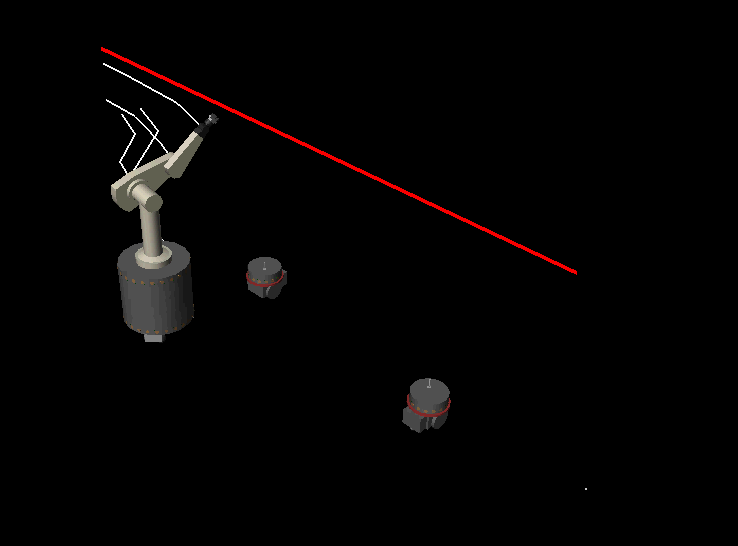
File scavenger v301 games. The purpose of this course is to introduce you to basics of modelling, design, planning, and control of robot systems. In essence, the material treated in this course is a brief survey of relevant results from geometry, kinematics, statics, dynamics, and control.The course is presented in a standard format of lectures, readings and problem sets. Lectures will be based mainly, but not exclusively, on material in the Lecture Notes. Lectures will follow roughly the same sequence as the material presented in the notes, so it can be read in anticipation of the lectures.Topics: robotics foundations in kinematics, dynamics, control, motion planning, trajectory generation, programming and design.
Lecture by Professor Oussama Khatib for Introduction to Robotics (CS2. A) in the Stanford Computer Science Department. In the first lecture of the quarter, Professor Khatib provides an overview of the course Cartoon and TV Robots: read pdf hannahstrateryoga.
Prerequisites: matrix algebra.
From 2016 A humanoid robot is a with its body shape built to resemble the. The design may be for functional purposes, such as interacting with human tools and environments, for experimental purposes, such as the study of, or for other purposes. In general, humanoid robots have a torso, a head, two arms, and two legs, though some forms of humanoid robots may model only part of the body, for example, from the waist up. Some humanoid robots also have heads designed to replicate human facial features such as eyes and mouths. Are humanoid robots built to aesthetically resemble humans.
Was created to be a personal assistant. It is self-guiding and has limited speech recognition and synthesis. It can also carry things. Humanoid robots are now used as research tools in several scientific areas. Researchers study the human body structure and behavior (biomechanics) to build humanoid robots. On the other side, the attempt to simulate the human body leads to a better understanding of it. Human cognition is a field of study which is focused on how humans learn from sensory information in order to acquire perceptual and motor skills.
This knowledge is used to develop computational models of human behavior and it has been improving over time. It has been suggested that very advanced robotics will facilitate the enhancement of ordinary humans.

Although the initial aim of humanoid research was to build better and for human beings, knowledge has been transferred between both disciplines. A few examples are powered leg prosthesis for neuromuscularly impaired, ankle-foot orthosis, biological realistic leg prosthesis and forearm prosthesis. Besides the research, humanoid robots are being developed to perform human tasks like personal assistance, through which they should be able to assist the sick and elderly, and dirty or dangerous jobs. Humanoids are also suitable for some procedurally-based vocations, such as reception-desk administrators and automotive manufacturing line workers. In essence, since they can use tools and operate equipment and vehicles designed for the human form, humanoids could theoretically perform any task a human being can, so long as they have the proper. However, the complexity of doing so is immense. They are also becoming increasingly popular as entertainers.
For example,, a female robot, sings, plays music, dances and speaks to her audiences at Universal Studios. Several Disney theme park shows utilize animatronic robots that look, move and speak much like human beings. Although these robots look realistic, they have no cognition or physical autonomy. Various humanoid robots and their possible applications in daily life are featured in an independent documentary film called, which was released in 2010. Humanoid robots, especially those with, could be useful for future dangerous and/or distant, without having the need to turn back around again and return to once the mission is completed. Sensors [ ] A is a device that measures some attribute of the world. Being one of the three primitives of robotics (besides planning and control), sensing plays an important role in.
Sensors can be classified according to the physical process with which they work or according to the type of measurement information that they give as output. In this case, the second approach was used. Proprioceptive sensors [ ] sensors sense the position, the orientation and the speed of the humanoid's body and joints.
In human beings the otoliths and semi-circular canals (in the inner ear) are used to maintain balance and orientation. In addition humans use their own proprioceptive sensors (e.g.
Touch, muscle extension, limb position) to help with their orientation. Humanoid robots use to measure the acceleration, from which velocity can be calculated by integration; to measure inclination; force sensors placed in robot's hands and feet to measure contact force with environment; position sensors, that indicate the actual position of the robot (from which the velocity can be calculated by derivation) or even speed sensors. Exteroceptive sensors [ ]. An artificial hand holding a lightbulb Arrays of can be used to provide data on what has been touched. The uses an array of 34 tactels arranged beneath its skin on each finger tip.